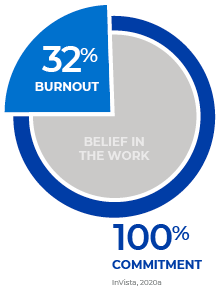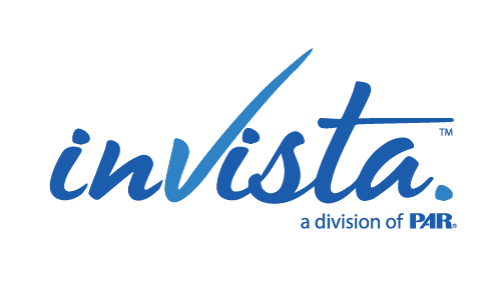Workplace burnout and employee engagement are separate phenomena that are both studied regularly. But what about the relationship between them? The literature provides ample evidence for a strong causal correlation.
Employee engagement has benefits that are widely accepted (e.g., increased productivity, quality of work, higher customer satisfaction). But too much engagement has the potential to increase burnout—especially in the presence of high work demands and time pressure.
What causes burnout?
Burnout occurs when chronic workplace stress is not successfully managed. When experiencing burnout, employees face exhaustion and increased negativity toward their job, with reduced professional efficacy. In purpose-driven work, there is an even higher risk of engagement turning into burnout—for example, when employees consistently take on too much or make large personal sacrifices for work. There is often a tendency for this risk to be higher in organizations where employees are really committed to the mission, especially in nonprofit organizations. The highly engaged “checking emails at midnight” mindset must be re-evaluated to prevent employees from burning out. It is critical to help employees find a better work-life balance.
How has the pandemic affected employees’ burnout levels?
In several recent studies conducted by InVista, we  found high risk for burnout levels ranging from 32% to 39% (InVista, 2020a[1], 2020b[2]). During these challenging times, there is an increased need to mitigate burnout. The new working world creates many unique challenges such as “Zoom fatigue” and blurred lines between work and home; these, combined with life stressors employees may be battling such as virtual school, health concerns, lack of social interaction, and changes in routine, result in a reduced natural resiliency. Consider this analogy for stress: Starting a teapot with hot water means it will boil faster once on the stove. However, cold water can tolerate more and more heat before it boils. Similarly, a more relaxed employee can tolerate more workplace stress before reaching their boiling point.
found high risk for burnout levels ranging from 32% to 39% (InVista, 2020a[1], 2020b[2]). During these challenging times, there is an increased need to mitigate burnout. The new working world creates many unique challenges such as “Zoom fatigue” and blurred lines between work and home; these, combined with life stressors employees may be battling such as virtual school, health concerns, lack of social interaction, and changes in routine, result in a reduced natural resiliency. Consider this analogy for stress: Starting a teapot with hot water means it will boil faster once on the stove. However, cold water can tolerate more and more heat before it boils. Similarly, a more relaxed employee can tolerate more workplace stress before reaching their boiling point.
High engagement, high burnout: One organization’s story
InVista recently conducted a study with a nonprofit organization (InVista, 2020a1) in which we found both high employee engagement and high burnout. Employees indicated 100% endorsement and commitment toward the organization’s mission and belief in the work. However, 32% also indicated high levels of burnout.
Employees were experiencing a tremendous workload, with insufficient personnel; on top of that, they experienced many interruptions and reported working with inadequate equipment and technology to do their jobs. Employees also expressed a generally poor work–life balance, which is not surprising considering their high engagement and commitment to the organization in combination with the intense work demands.
Fortunately, this organization had extremely high organizational support, meaning that leadership cares about employees, coworkers support each other, and employees are trusted to complete work on their own. These are all keys for motivating and supporting employees.
Related article: How to truly support employee well-being
The fine line between engagement and burnout
Engagement and burnout are clearly correlated. If you have highly engaged employees, it’s critical you monitor or assess your employees for signs of burnout and address it appropriately. You’ve done the hard work to get your employees to be engaged. Now, don’t ruin a good thing by causing them to burn out and leave.
For a FREE, complete guide to helping employees mitigate burnout while staying engaged, click here.
[1] InVista. (2020a). [Unpublished raw data on wellbeing for Beta Client 1].
[2] InVista. (2020b). [Unpublished raw data on wellbeing for Beta Client 2].


Recent Comments